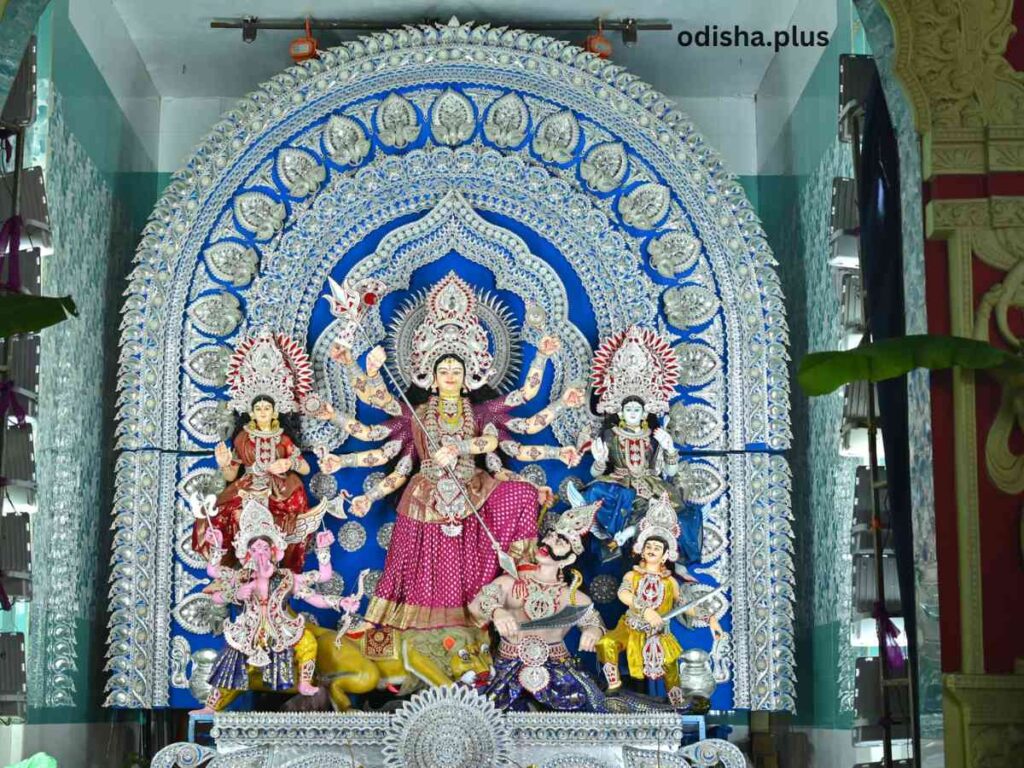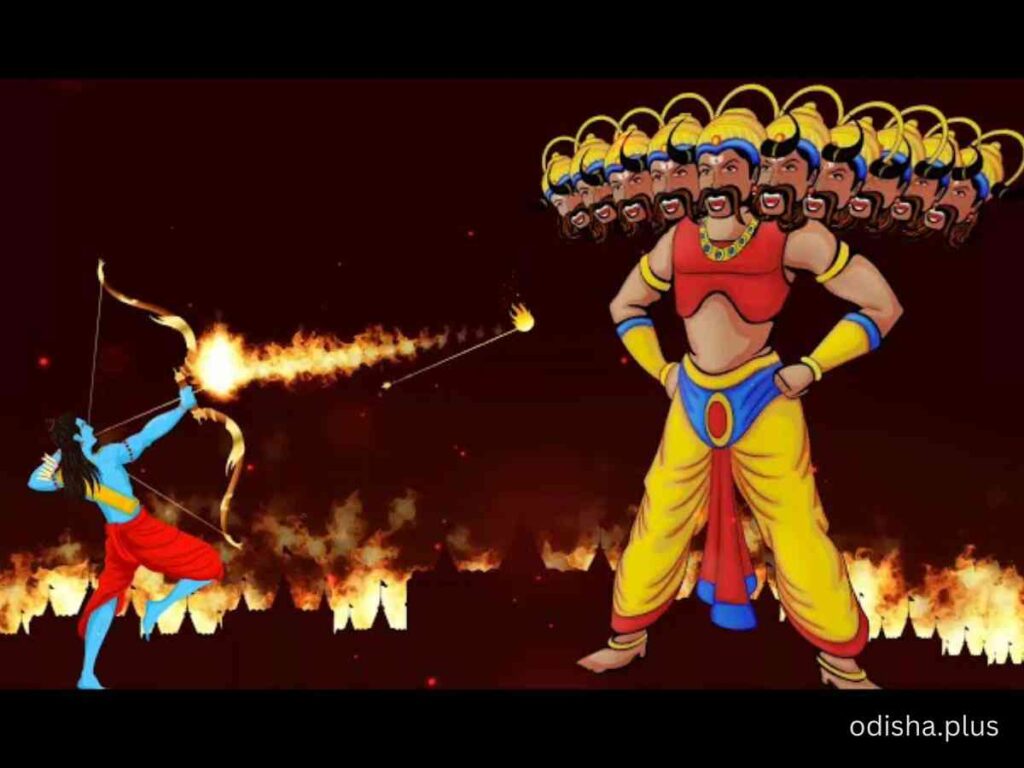Chandi Medha, Odisha’s traditional silver filigree art form adorning deities
Mrinal Chatterjee

Chandi Medha (decorative background of the deities made of silver filigree works) is unique to Odisha.
‘Chandi Medha’ could be seen during Durga puja in several puja mandaps of Cuttack and Bhubaneswar and during Laxmi Puja in Dhenkanal.
‘Chandi Medha’ was first introduced in Choudhury Bazar Puja Mandap of Cuttack in 1957. For 35 years it enjoyed the distinction of being the only puja pandal with a chandi medha. From 1991, other puja mandaps in Cuttack and subsequently in Bhubaneswar started using chandi medha. Now there are 30 odd chandi medha in Cuttack. Each of these weigh between 150 – 500 kgs. The estimated cost to built a chandi medha can range from around Rs 75 lakh – 1 crore rupees. The cost to repair and polish a chandi medha is between 1 – 3 lakhs rupees.

Though sometimes criticized for extravagance, the making of the medhas is providing the much needed engagement to hundreds of craftsmen. There was a severe crunch of demand for silver filigree jewellery and other decorative items. Introduction of machinery in making filigree works has also affected their livelihood adversely.
‘Utkal Gourab’ Madhusudan Das founded Odisha Art Wares Works in 1897 to promote silver filigree, horn works and other handmade crafts. His initiative bore fruit as tarakasi (silver filigree) works were introduced in different states of India and abroad, creating a distinctive identity of Odisha.
Cuttack Heritage Walks, a civil society initiative to raise awareness about the heritage of Odisha organised a heritage walk of chandi medha of Cuttack on 10th October, 2024 (Thursday). It was curated by well-known author Raja Parija of Silver Splendour of the Millennium City, and The Silvery Touch of Cuttack fame.
Ravan Dahan and Mahishasur Vadh
Vijaya Dashami (also known as Dussehra) is associated with two legends. In the eastern states of India, Vijaya Dashami is associated with the legend of Goddess Durga slaying the demon king Mahisashur. The story, in brief is as follows:

Mahishasur’s tyranny affected both humans and gods, and none could defeat him due to a boon that protected him from being slain by any man or god. In response, Lord Vishnu, Lord Shiva and Lord Brahma united to create Maa Durga. She fought Mahishasur for nine nights during Navratri, ultimately defeating him on the 10th day, which became known as Vijaya Dashami.
Another legend behind Vijaya Dashami is about Lord Ram vanquishing Ravan on this day. This story is at the centre of Dussehra celebration in North India. Ravan Dahan (burning) is an integral part of Dussehra celebrations in North India, observed with great enthusiasm. This ritual commemorates Lord Rama’s triumph over the demon king Ravana, who had abducted Sita, in the epic Ramayana. The event takes place on the 10th day of the festival of Navratri.
On this day, effigies of Ravan, often along with his brother Kumbhakarna and son Meghnad, are set ablaze in large public gatherings. In many places, it is preceded by Ram Leela, a theatrical performance of the story of Lord Ram. These effigies are often stuffed with fireworks, creating a spectacular display as they burn. The effigies are often towering, sometimes as tall as 30-40 feet, adding to the grandeur of the celebration.
The burning of Ravana as well as slaying of Mahishasur symbolizes the destruction of evil forces and the restoration of righteousness. It carries a deeper moral message, reminding people that no matter how powerful evil may seem, it will eventually be vanquished by truth and justice.
There is another legend behind Vijaya Dashami, which is followed in Bengal. As per this, Ma Durga comes to the earth, his father’s place with her sons Ganesh and Kartik and daughters Laxmi and Saraswati leaving her husband Lord Shiva at Kailash for four days beginning Saptami. She goes back to Kailash on the day of Vijaya Dashami. The Bengali women have a special ritual called ‘Sindoor Khela’ to bid the Goddess adieu.
Different rituals for the same festival in different parts of the country show its cultural diversity.
Ravan Dahan
Vartika Nanda, journalist-turned media academician is also a social activist. She works on prison reforms. She also writes poetry.
She had posted one of her poems originally written in Hindi on social media, which I liked and translated into English, Odia and Bengali.
Here it is:
Ravan
I saw Ravan
I spoke to him.
He said he never went anywhere,
there was no need to go.
He just changed his address.
He left Lanka
and merged into the air.
(The author is Regional Director Indian Institute of Mass Communication, IIMC Dhenkanal. Views expressed are personal.)


























